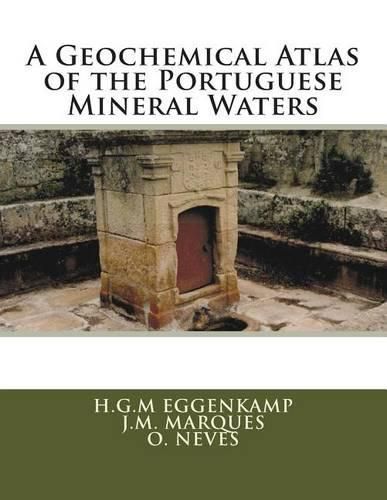Readings Newsletter
Become a Readings Member to make your shopping experience even easier.
Sign in or sign up for free!
You’re not far away from qualifying for FREE standard shipping within Australia
You’ve qualified for FREE standard shipping within Australia
The cart is loading…






Portugal is one of the richest countries in thermal and mineral water resources of the world. These thermal and mineral waters show a large variety in chemical compositions. From around 500 mineral springs and wells the chemical compositions were collected from public sources and these are plotted on maps that show the distribution of 13 different elements (lithium, sodium, magnesium, calcium, aluminium, iron, fluoride, chloride, sulphate, nitrate, carbonate, sulphide and silica) as well as the total dissolved solids and the pH. These maps show how the chemistry of the thermal and mineral waters are related to the very diverse geology of Portugal. The maps that are presented in this Atlas are very useful for several scientific and geochemical purposes, such as geological, chemical, medical and environmental sciences, as well as technological applications in industry, balneotherapy and geothermics. It is hoped that the publication of this Atlas will increase the interest in the geochemistry of the Portuguese thermal and mineral resources and that in the near future more detailed studies involving also chemical analysis of minor and trace elements are presented which would enlarge the application of a new geochemical atlas either in environmental geochemistry or in medical geochemical domains.
$9.00 standard shipping within Australia
FREE standard shipping within Australia for orders over $100.00
Express & International shipping calculated at checkout
Portugal is one of the richest countries in thermal and mineral water resources of the world. These thermal and mineral waters show a large variety in chemical compositions. From around 500 mineral springs and wells the chemical compositions were collected from public sources and these are plotted on maps that show the distribution of 13 different elements (lithium, sodium, magnesium, calcium, aluminium, iron, fluoride, chloride, sulphate, nitrate, carbonate, sulphide and silica) as well as the total dissolved solids and the pH. These maps show how the chemistry of the thermal and mineral waters are related to the very diverse geology of Portugal. The maps that are presented in this Atlas are very useful for several scientific and geochemical purposes, such as geological, chemical, medical and environmental sciences, as well as technological applications in industry, balneotherapy and geothermics. It is hoped that the publication of this Atlas will increase the interest in the geochemistry of the Portuguese thermal and mineral resources and that in the near future more detailed studies involving also chemical analysis of minor and trace elements are presented which would enlarge the application of a new geochemical atlas either in environmental geochemistry or in medical geochemical domains.